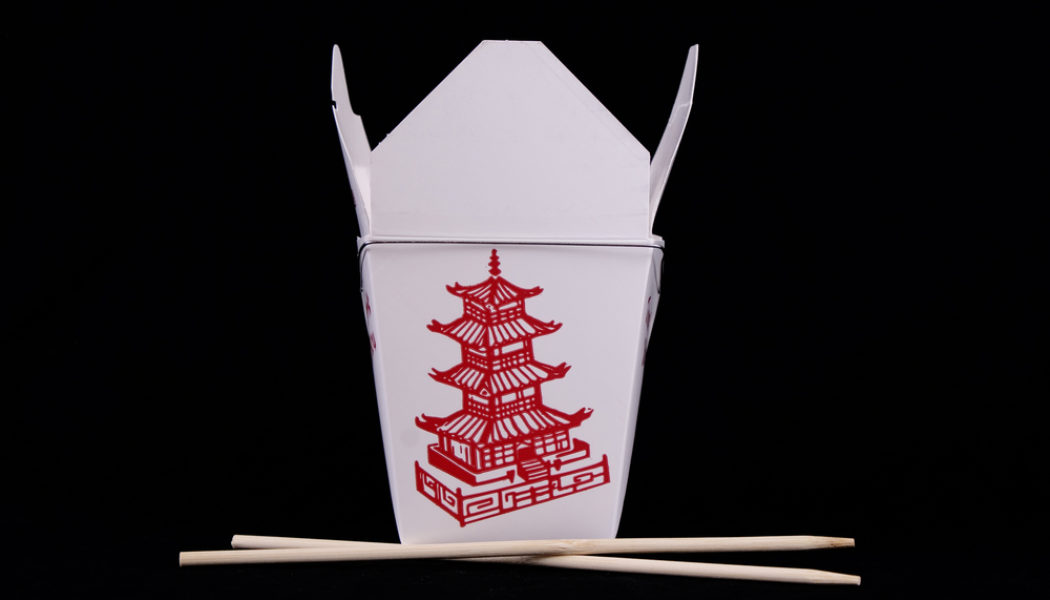It may be hard to believe, but for a brief moment in history, oysters were one of the most popular foods along the Eastern US coast, especially in New York City. Cheaper than poultry, the bivalve saltwater mollusk was affordable for the working class, thanks to advances in dredge harvesting.
As plentiful and inexpensive as oysters were, getting to the fleshy bits requires a bit of skill. What’s more, once shucked, they don’t stay fresh for very long, a more pressing concern before widespread refrigeration. The need for an inexpensive, watertight package that can safely carry oysters home inspired the eventual invention of the “oyster pail,” an early version of which was patented in 1890, then significantly improved upon in 1894 by Frederick Weeks Wilcox. The new version could be formed from a single piece of paper or card stock so that no moisture gets trapped, leading to unwanted leakage. Its folded design also allows steam to escape. Ever handy, the top can be folded and locked, and a bail can be attached to carry the pail upright. Since it gets made from a single piece, users can also carefully unfold it to form a serving surface. Because who doesn’t want an instant, on-demand plate?
That same oyster pail would go on to become one of the most ubiquitous pieces of carryout food packaging—the Chinese takeout box.
As universally recognized as the pizza box, the takeout container is an essential staple of American dining culture, popping up in movies and television, with its legacy further sealed now that it’s an official emoji, adding it to our global digital language.
While oyster consumption was undergoing a Golden Age at the turn of the 20th century, the beginnings of American Chinese cuisine were also underway, with immigrants coming to America in search of a better life starting to adapt and localize dishes from home. American Chinese food would have its ups and downs in popularity, being lifted by its accommodation of the American palate and affordability, with dips fueled by racist-inspired accusations of using rat and feline meat. As is often the case with racism in American history, deliciousness eventually won out, and “Chinese” food would go on to become one of the most popular cuisines in America, despite having staples like General Tso’s, orange chicken, chop suey, and the fortune cookie absent from China’s canon of traditional dishes.
The rise of Chinese food couldn’t have come at a better time for the oyster pail. Pollution, disruption to the mollusk’s environment, and over-harvesting had caused oyster numbers to dwindle to alarming levels, forcing a scaling back of consumption and rise in prices. Chinese takeout, however, remained cheap and tasty, and the oyster pail’s design is ideal for Chinese takeout and delivery. Though the internet collectively blew its mind over the “plate hack,” eating out of the container is ridiculously easy with chopsticks, and hell, it’s downright romantic. Usually made from bleached paperboard with a coated interior, the pails are inexpensive and microwave-safe with the metal bail removed.
The oyster pail was also inexpensive, and it made it popular and ubiquitous with Chinese food. But in the 70s, a graphic designer working for Fold-Pak (whose name was not-so-kindly remembered by history) added pagodas with “Thank You” and “enjoy” messages laid out in a “chop suey-type” calligraphic font. It would be another visual element that would become commonplace in American Chinese restaurants; both get executed in red, a color of good fortune and happiness in Chinese culture.
Like orange chicken, the paper pail container would be all but unrecognizable in China were it not for the exportation of American media like TV and film. Shows like Friends and Big Bang Theory and movies like Avengers: Endgame are immensely popular in China and replete with examples of takeout food containers, including the oyster pail. Thanks to a more interconnected world, American Chinese food and all its trappings, including the folded takeout box, have made it back to the culture that inspired it, with restaurants devoted to the particular cuisine now in mainland China, serving homesick expatriates and curious young people alike.
In 2017, the Unicode Consortium, the organization charged with managing emojis, added four new “Chinese food” icons, even though two of them—fortune cookies and the pagoda-sporting takeout box—aren’t Chinese at all. Like American Chinese food before it, the Chinese takeout emoji was designed by a Chinese immigrant in America. Yiying Lu came to San Francisco to ply her trade as a designer, and before creating the takeout emoji, was responsible for the Twitter “Fail Whale.” After texting about dinner with her friend Jennifer 8. Lee, the two noticed that there wasn’t an emoji for Chinese food items like dumplings, despite nearly every culture having some version of this beloved, pocketed goodness. The lack of cultural staples and favorite dishes inspired the formation of Emojination, an organization that advocates for more inclusivity and representation in emojis. In addition to the dumpling and takeout emojis, Emojination also led the way in adding the hijab and interracial couple emoji.
Thanks to the fondness of “Chinese” food in the US, the folded paper oyster pail found a new use outside of transporting raw and freshly shucked mollusks and has since become synonymous with American Chinese cuisine. The American appetite for Schezuan beef, egg foo young, lo mein, and other dishes found in US Chinese restaurants meant that the box would find its way into media such as TV shows and movies, and of course, emoji.
Ultimately, the “Chinese” takeout box is a uniquely American invention, just like the food typically found inside. But it also has the distinction of being a piece of packaging recognized by billions, with some never even seeing an example in person.
Quite the feat for a simple bucket made out of folded cardboard.
Join Our Telegram Group : Salvation & Prosperity









